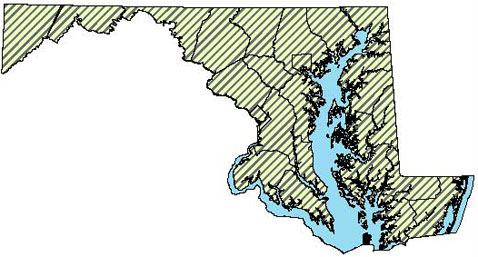Field Guide to Maryland's Turtles (Order Testudines)
Main_Content
Snapping Turtle (Chelydra serpentina) | | Common Name:
|
Photo of Snapping Turtle courtesy of Linh Phu.
|
Size: 8 - 14 inches. Record - 19 inches |
Appearance:
- The Snapping Turtle is Maryland's largest freshwater turtle.
- Easily identified by its large head, three low knobby keels along the centerline of the top shell or carapace (though these may be gone in old animals)
- Small yellowish-tan plastron (bottom shell)
- Long tail with three rows of spiky tubercles, reminiscent of dinosaurs
- The carapace is variable: tan, brown, olive to black
- Scutes may be smooth or have raised lines radiating from a central point
|
Habitats:Cosmopolitan in habitat preference. Any permanent body of freshwater. Can also be found in brackish water.

Photo of Habitat for Snapping Turtle
courtesy of Scott A. Smith.
|
How to Find:These animals do not typically bask exposed, but look for their tracks along muddy shorelines or in shallow wetlands, where they often bury themselves in the warm mud just under the surface, only their eyes and nostrils exposed. Known for being bad-tempered, beware of the “snap” of its jaws as it explosively extends its long neck when threatened. Can be found on land during nesting from late April to mid-June, often at great distances from water.
|
Distribution in Maryland:Common throughout Maryland.

|
|
